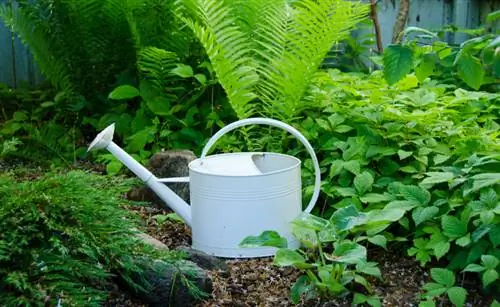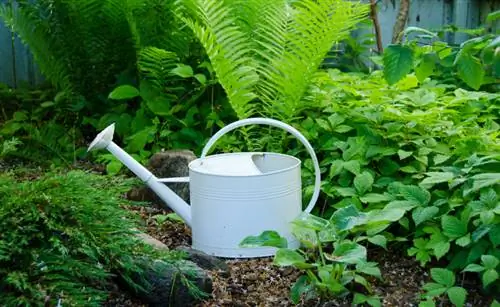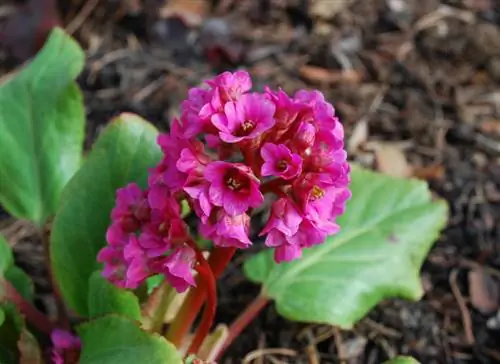- Author admin [email protected].
- Public 2023-12-16 16:46.
- Last modified 2025-01-23 11:20.
With its delicate fronds, it looks like it has come from prehistoric times. The fern, which can be found worldwide, has made its way on earth over the course of millions of years. Many people plant it in the garden or put it in their apartment. But what care does he need?

What care does a fern need?
Proper care of a fern includes regular watering with low-lime water, avoiding waterlogging, misting the fronds for increased humidity, fertilizing with organic fertilizer every two weeks during the growing season, and occasionally repotting or cutting the plant.
How to water fern?
Fern attaches incredible importance to a moist environment. Therefore, the soil in which it grows should be kept slightly moist. In the garden, it is usually not necessary to water it regularly. Rain showers take over. But the fern in the pot in the apartment needs to be watered regularly.
Watering is necessary as soon as the top layer of soil has dried. Low-lime water is best. But be careful: don't water too diligently! The fern doesn't get waterlogged at all! In addition to watering, it is advisable to spray indoor ferns. The water mist is good for him and creates high humidity. All ferns love that!
Does fern need fertilizer?
Fertilizing ferns is not a forced procedure. The plant can be fertilized during its main growing season between spring and fall. It is enough to provide them with a little fertilizer every two weeks during this period. Ferns should not be fertilized during winter dormancy.
Many fern owners resort to long-term fertilizer (€25.00 on Amazon). This should be dosed at half the manufacturer's instructions. Slowly decomposing fertilizers are also particularly suitable for fertilizing. These include, for example, the following organic fertilizers:
- Bone meal
- Blood Meal
- Compost
- Horn shavings
Should fern be pruned?
Wintergreen ferns do not need to be cut. It's enough if you clean them out. Deciduous species also do not need pruning. But if you cut them, they look better.
Old or brown fronds are cut down in autumn. Anyone who cuts back the fronds in spring must be careful not to injure the young ones that are already sprouting with the scissors.
Are there specific diseases that affect ferns?
Ferns are rarely affected by diseases. Diseases such as rot can only occur if you make mistakes when caring for them. In addition, it is not uncommon for mold to develop, causing the plant to die from the inside out.
Which pests can be dangerous?
Especially if the soil on room ferns is too dry, there is a risk of pest infestation. It helps to spray the fronds every now and then. The following pests like to attack the fern:
- Spider mites
- Aphids
- Scale insects
- Bugs
- Caterpillars
- Bigmouth Weevil
Should indoor ferns be repotted?
Ferns in pots should be repotted regularly. But only when the roots look out of the bottom of the pot. The best time is in spring. If necessary, you can divide your indoor fern before moving it.
Tips & Tricks
Many fern species from tropical areas look miserable in winter. But don't worry: The cause is not necessarily care errors. These ferns have gone into hibernation.






